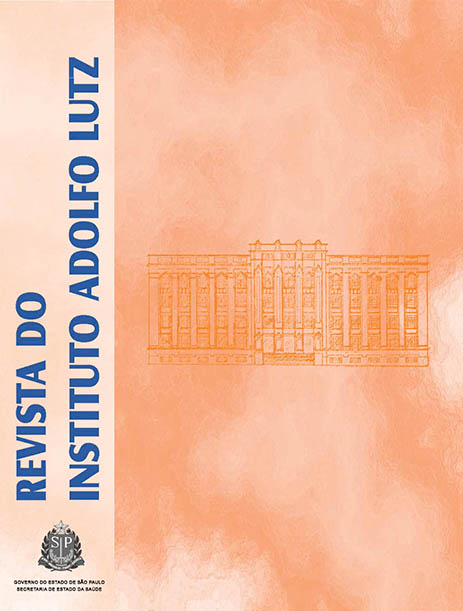Abstract
The food industries show interest for the essential oils found in medicinal, aromatic and seasoning plants, as they contain antimicrobial activity against the decaying and/or pathogenic bacteria. In this study, the inhibitory properties of essential oils extracted from the rinds and the leaves of Citrus limonia Osbeck (Cravo-lemon), Citrus aurantifolia (Chrst.) Swingle (Galego-lemon) and Citrus latifolia Tanaka (Tahiti-lemon) were assessed on Staphylococcus aureus, Escherichia coli and Pseudomonas aeruginosa, and Candida utilis yeast. This experiment was performed by means of agar dish diffusion technique; the culture in plates-standard technique with and without the presence of oils was used for Penicillium expansum fungus. In the agar diffusion assays, the analyzed essential oils promoted the inhibition of all of the tested microorganisms; and the major inhibition haloes were detected on Candida utilis yeast. As for bacteria, the oils induced better inhibition on Staphylococcus aureus than on Escherichia coli and Pseudomonas aeruginosa. The inhibitory effect of the citros oils was effective on Penicillium expansum fungus; excepting Cravo-lemon oil which showed a growth-stimulating effect. The oils evaluated in this study showed to have inhibitory effect on the analyzed microorganisms.References
1. Pereira AA. Efeito inibitório de óleos essenciais sobre o crescimento de bactérias e fungos [dissertação de mestrado]. Lavras, MG: Universidade Federal de Lavras; 2006.
2. Caccioni DRL, Guizzardi M, Biondi DM, Renda A, Ruberto G. Relationship between volatile components of citrus essential oils and antimicrobial action on Penicillium digitatum and Penicillium italicum. Int J Food Microbiol. 1998;43:73-9.
3. Prashar A, Hili P, Veness RG, Evans CS. Antimicrobial action of palmarosa oil (Cymbopogon martinii) on Saccharomyces cerevisiae. Phytochem. 2003;63:569-75.
4. Grassi Filho H, Penteado BB, Santos dos CH. Preparo de amostras e métodos para a determinação do teor de óleo essencial de frutos de limoeiro. Rev Bras Frutic. 2005;27:191-3.
5. Fisher K, Philips CA. The Effect of lemon, orange and bergamot essential oils and their components on the survival of Campylobacter jejuni, Escherichia coli O157, Listeria monocytogenes, Bacillus cereus and Staphylococcus aureus in vitro and in food systems. J Appl Microbiol. 2006;101:1232-40.
6. Craveiro AA, Fernandes AG, Andrade CHS, Matos FJ de A, Alencar JW, Machado MIL. Óleos essenciais de plantas do Nordeste. Fortaleza, CE: Universidade Federal do Ceará; 1981.
7. Deans SG, Ritchie G. Antibacterial properties of plant essential oils. Int J Food Microbiol. 1987;5:165-80.
8. Mendonça AT. Efeito dos óleos essenciais de condimentos sobre o crescimento de Staphylococcus aureus em ricota cremosa [tese de doutorado] Lavras, MG: Universidade Federal de Lavras; 2004.
9. Stangarlin JR, Schwan-estrada KRF, Cruz mês, Nozaki MH. Plantas medicinais e controle alternativo de fitopatógenos. Biotecnol Ciênc & Desenvolv. 1999;11:16-21.
10. SAS Institute. SAS for Windows, Realese 8. Cary; 2000.
11. Ferreira DF. Análises estatísticas por meio do Sisvar para o Windows versão 4.0. Reunião anual da região brasileira da sociedade internacional de biometria. São Carlos: Programas e resumos; 2000. p. 255-8.
12. Smith-Palmer A, Stewart J, Fyfe L. Antimicrobial properties of plant essential oils and essences against five important food-borne pathogens. Lett Appl Microbiol. 1998;26:118-22.
13. Dorman HJD, Deans SG. Antimicrobial agents form plants: antibacterial activity of plant volatile oils. J Appl Microbiol. 2000;8:308-16.
14. Burt S. Essential oils: their antibacterial properties and potential applications in foods: a review. Int J Food Microbiol. 2004;94:223-53.
15. Nikaido H. Molecular basis of bacterial outer membrane permeability revisited. Microbiol Mol Biol Rev. 2003;67:556-93.
16. Chang ST, Chen PF, Chang SC. Antibacterial activity of leaf essential oils and their constituents from Cinnamomum osmophloeum. J Ethnopharmacol. 2001;77:123-7.
17. Duarte MCT, Leme EE, Delarmelina C, Soares AA, Figueira GM, Sartoratto A. Activity of essential oils from Brazilian medicinal plants on Escherichia coli. J Ethnopharmacol. 2007;111:197-201.
18. Cox SD, Mann CM, Markham JL, Bell HC, Gustafson JE, Warminton JR. The mode of antimicrobial action of the essential oil of Meleuca alternifolia (tea tree oil). J Appl Microbiol. 2000;88:170-5.
19. Nakamura CV, Nakamura TU, Bando E, Melo AFN, Cortez DAG, Filho BP Antibacterial Activity of Ocimum gratissimum L. Essential Oil. Memórias do Instituto Oswaldo Cruz. 1999;94:675-8.
20. Sacchetti G, Maietti S, Muzzoli M, Scaglianti M, Manfredini S, Radice M. Comparative evaluation of 11 essential oils of diferent origin as functional antioxidants, antiradicals and antimicrobials in foods. Food Chem. 2005;91:621-32.
21. Souza EL, Stamford TLM, Lima EO, Trajano VN. Effectiveness of Origanum vulgare L. essential oil to inhibit the growth of food spoiling yeasts. Food Control. 2007;18:409-13.
22. Pereira MC, Vilela GR, Costa LMAS, Silva RA, Soares AF, Fonseca EVN. Inhibition fungi growth through of utilization essential oils of spice. Ciênc Agrotecnol. 2006;30:731-8.
23. Sharman N, Tripathi A. Effects of Citrus sinensis (L.) Osbeck epicarp essential oil on growth and morphogenesis of Aspergillus niger (L.) Van Tieghem. Microbiol Res. 2006;1-8.
24. Lota M, Serra DR, Tomi F, Jacquemond C, Casanova J. Volatile Components of Peel and Leaf Oils of Lemon and Lime Species. J Agric Food Chem. 2002;50:796-805.
25. Tserennadmid R, et al. Anti yeast activities of some essential oils in growth medium, fruit juices and milk. Int J Food Microbiol. 2011;144:480-6.

This work is licensed under a Creative Commons Attribution 4.0 International License.
Copyright (c) 2012 Instituto Adolfo Lutz Journal
